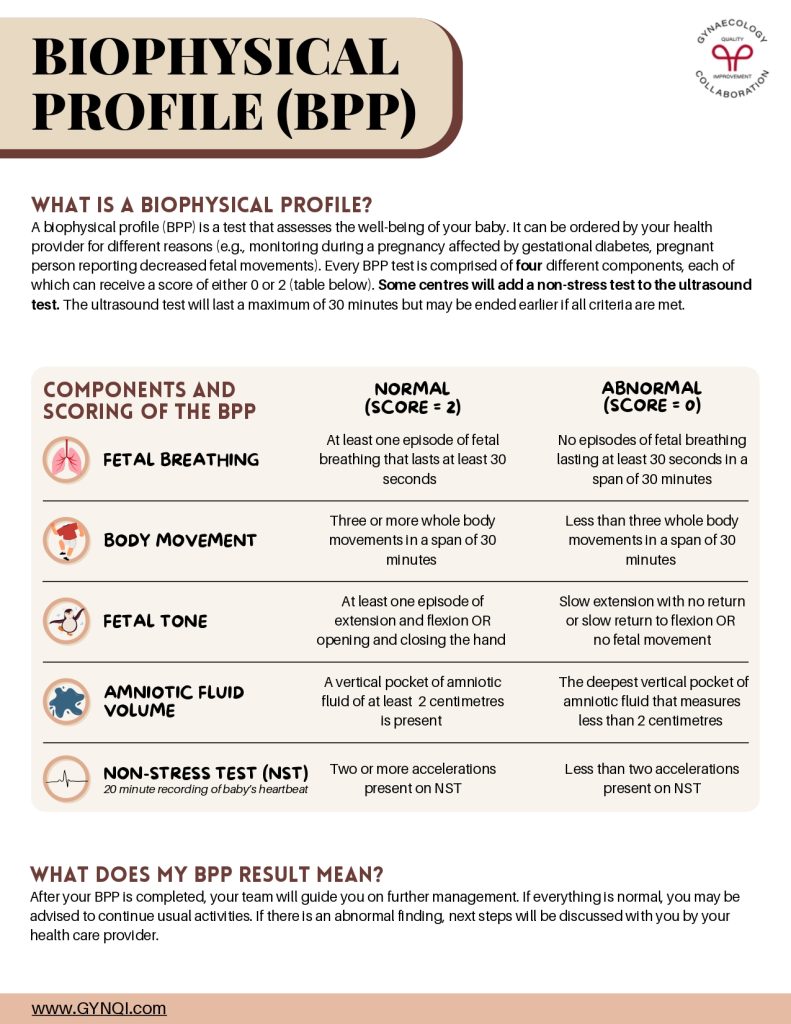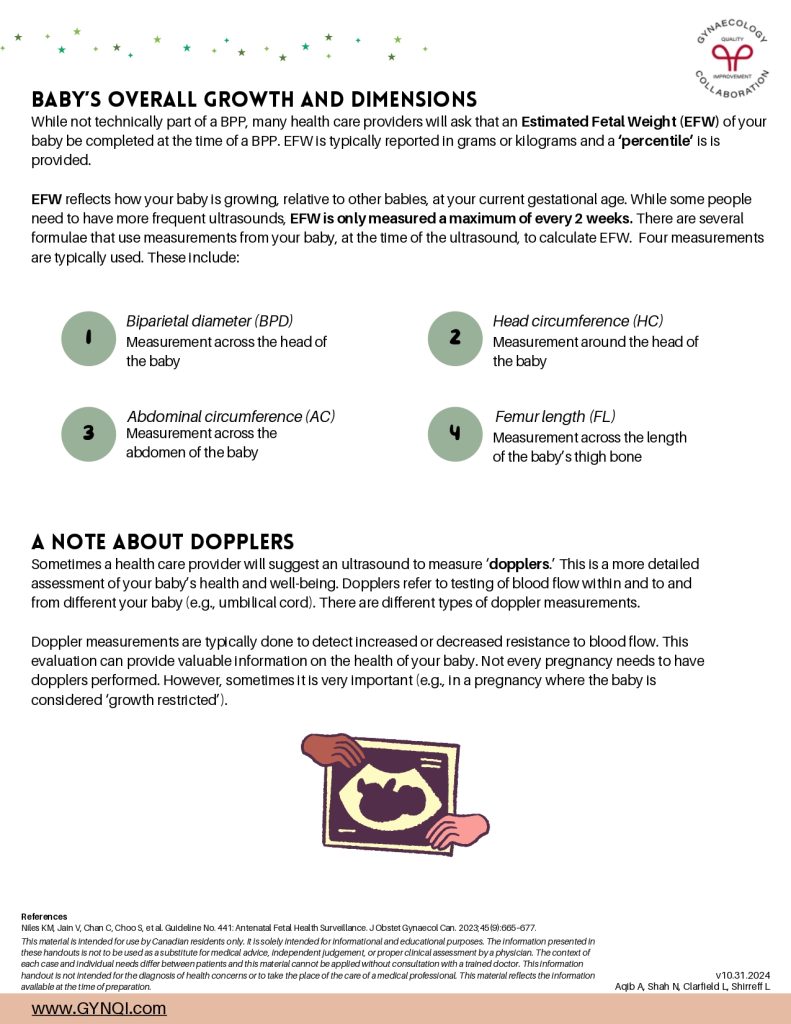
Biophysical Profile (BPP)
What is A Biophysical Profile?
A biophysical profile (BPP) is a test that assesses the well-being of your baby. It can be ordered by your health provider for different reasons (e.g., monitoring during a pregnancy affected by gestational diabetes, pregnant person reporting decreased fetal movements). Every BPP test is comprised of four different components, each of which can receive a score of either 0 or 2 (table below). Some centres will add a non-stress test to the ultrasound test. The ultrasound test will last a maximum of 30 minutes but may be ended earlier if all criteria are met.
Components and Scoring of the BPP
| Normal (Score = 2) | Abnormal (Score = 0) | |
| Fetal Breathing | At least one episode of fetal breathing that lasts at least 30 seconds | No episodes of fetal breathing lasting at least 30 seconds in a span of 30 minutes |
| Body Movement | Three or more whole body movements in a span of 30 minutes | Less than three whole body movements in a span of 30 minutes |
| Fetal Tone | At least one episode of extension and flexion OR opening and closing the hand | Slow extension with no return or slow return to flexion OR no fetal movement |
| Amniotic Fluid Volume | A vertical pocket of amniotic fluid of at least 2 centimetres is present | The deepest vertical pocket of amniotic fluid that measures less than 2 centimetres |
| Non-Stress Test (NST), a 20 minute recording of the baby’s heartbeat | Two or more accelerations present on NST | Less than two accelerations present on NST |
What Does My BPP Result Mean?
After your BPP is completed, your team will guide you on further management. If everything is normal, you may be advised to continue usual activities. If there is an abnormal finding, next steps will be discussed with you by your health care provider.
Baby’s Overall Growth and Dimensions
While not technically part of a BPP, many health care providers will ask that an Estimated Fetal Weight (EFW) of your baby be completed at the time of a BPP. EFW is typically reported in grams or kilograms and a ‘percentile’ is is provided.
EFW reflects how your baby is growing, relative to other babies, at your current gestational age. While some people need to have more frequent ultrasounds, EFW is only measured a maximum of every 2 weeks. There are several formulae that use measurements from your baby, at the time of the ultrasound, to calculate EFW. Four measurements are typically used. These include:
- Biparietal diameter (BPD): measurement across the head of the baby
- Head circumference (HC): measurement around the head of the baby
- Abdominal circumference (AC): measurement across the abdomen of the baby
- Femur length (FL): measurement across the length of the baby’s thigh bone
A Note About Dopplers
Sometimes a health care provider will suggest an ultrasound to measure ‘dopplers.’ This is a more detailed assessment of your baby’s health and well-being. Dopplers refer to testing of blood flow within and to and from different your baby (e.g., umbilical cord). There are different types of doppler measurements.
Doppler measurements are typically done to detect increased or decreased resistance to blood flow. This evaluation can provide valuable information on the health of your baby. Not every pregnancy needs to have dopplers performed. However, sometimes it is very important (e.g., in a pregnancy where the baby is considered ‘growth restricted’).




